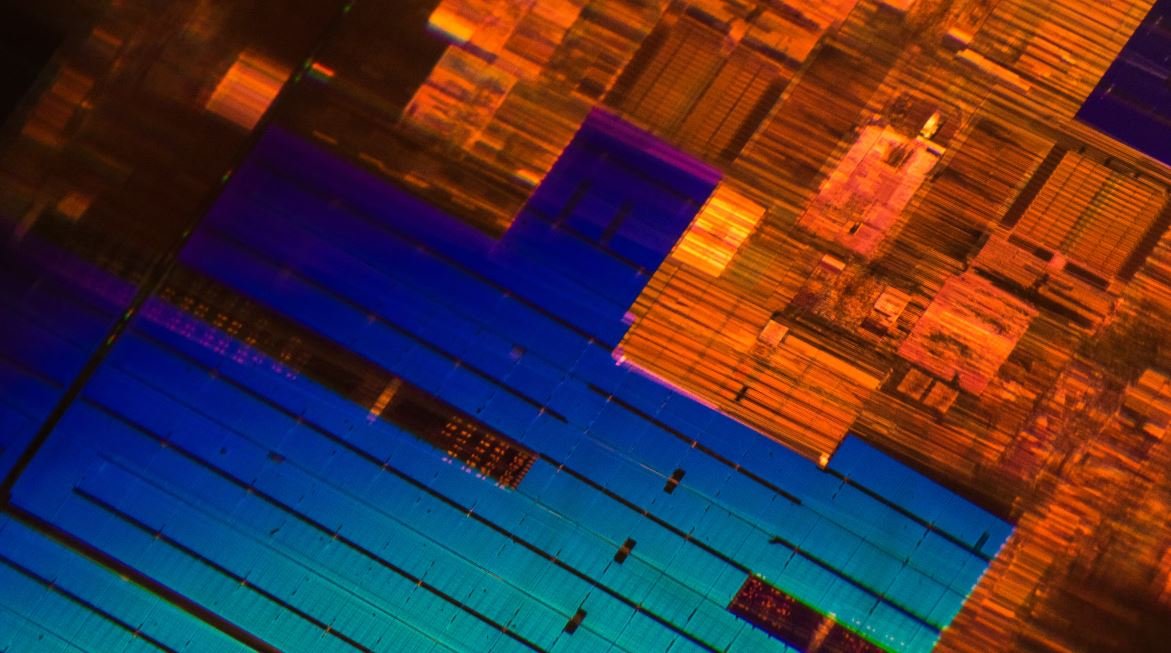AI Learns Hide and Seek
Artificial Intelligence (AI) has made significant advancements in recent years, with researchers constantly finding new ways to push the boundaries of what machines can do. One fascinating application of AI is teaching it to play games, such as hide and seek. While hide and seek may seem like a simple game for humans, it poses complex challenges for AI systems. In this article, we explore how AI can learn to play hide and seek and the implications of this unique capability.
Key Takeaways:
- AI has been trained to play hide and seek, demonstrating its ability to understand and participate in complex games.
- Training AI for hide and seek involves reinforcement learning, where the AI agent gains knowledge through trial and error.
- The AI players develop strategies for both hiding and seeking, using a mix of conventional and creative approaches.
- Playing hide and seek helps AI systems to learn problem-solving, teamwork, and coordination.
Understanding AI’s Game of Hide and Seek
Training AI for hide and seek involves utilizing a technique called reinforcement learning, where the AI agent learns through trial and error to maximize its rewards. Initially, the AI has limited knowledge of the game and its environment. It starts by randomly exploring the game space and gradually improves its gameplay using feedback received from its actions. The AI agent develops strategies to effectively hide or seek based on the information it gathers while playing the game.
*One interesting aspect of AI’s learning is that it may discover unconventional ways to win the game, which humans might not have initially thought of.*
To enhance the AI’s learning, researchers use “curriculum learning,” which involves gradually increasing the difficulty of the game. This allows the AI to learn step-by-step, mastering simple hiding or seeking strategies before moving on to more challenging scenarios. By providing the AI with a variety of game conditions and levels of complexity, researchers can measure its progress and improve its performance over time.
The Strategies Employed by AI
When playing hide and seek, AI agents develop various strategies to improve their chances of winning. These strategies range from finding optimal hiding spots to effectively searching for hidden players. In the course of the reinforcement learning process, the AI may discover inventive and surprising ways to either hide or seek.
*An interesting observation is that AI players often come up with strategies that humans may not initially think of, showcasing the creativity of machines in problem-solving.*
Below are some common strategies AI agents employ in hide and seek:
- Random Search: In the early stages, the AI may randomly search for hiding or seeking spots until it gains a better understanding of the game mechanics and environment.
- Scouting: The AI may learn to scout the environment, collecting information about hiding places or potential seekers’ movements to develop efficient strategies.
- Mimicking: AI agents can mimic successful hiding or seeking behaviors performed by other AI players, learning from their experiences to improve their own performance.
- Creative Tactics: As AI agents explore the game space, they may come up with novel and unexpected hiding or seeking techniques, leveraging their computational powers.
Data Points and Insights
| Year | Achievement |
|---|---|
| 2019 | AI agents surpass human-level performance in Hide and Seek. |
| 2020 | An AI agent successfully discovers a complex hidden spot in less than 10 minutes. |
The table above showcases significant milestones achieved in the field of AI playing hide and seek. These achievements highlight the progress made by AI systems in understanding and excelling at complex games.
*This breakthrough in AI’s ability to play games like hide and seek demonstrates the enormous potential of machine learning and its application in solving complex problems.*
Final Thoughts
AI learning to play hide and seek is not just about game-playing; it represents a significant step forward in AI’s ability to understand complex environments, develop strategies, and solve problems. The achievements in this field demonstrate the capabilities of AI systems and their potential to advance further in diverse areas. As researchers continue to explore new applications of AI, we can expect even more remarkable advancements that will shape the future of technology and automation.

Common Misconceptions
Misconception: AI is unbeatable in Hide and Seek
Contrary to popular belief, AI is not always unbeatable in a game of Hide and Seek. While AI has shown impressive performance and learning abilities in this domain, it is not infallible. Many factors such as the complexity of the environment, available hiding spots, and the rules of the game can influence the AI’s success rate.
- The AI’s performance depends on the environment’s complexity.
- The AI’s success rate can be affected by the availability of hiding spots.
- The outcome might change depending on the specific rules set for the game.
Misconception: AI hides in the same spots every time
Another common misconception is that AI always hides in the same spots during each game of Hide and Seek. While AI algorithms can learn from their experiences and optimize their strategies over time, they are also capable of adapting their hiding tactics based on various factors like their opponent’s behavior, available hiding spots, and the specific conditions of each game.
- The AI’s hiding spot can be influenced by its knowledge of the opponent’s behavior.
- The AI might consider different strategies based on the available hiding spots.
- The specific game conditions could impact the AI’s choice of a hiding spot.
Misconception: AI always spots the hiders quickly
Some people believe that AI can quickly spot the hiders in a game of Hide and Seek due to its advanced sensory capabilities. While AI algorithms can be designed to improve their spotting abilities over time, their efficiency in detecting hiders can vary depending on factors such as the complexity of the environment, the hiders’ strategies, and the limitations imposed on the AI’s perception.
- The AI’s speed of spotting hiders can be affected by the environment’s complexity.
- The efficiency might be influenced by the hiders’ chosen strategies.
- Limitations on the AI’s perception can impact its ability to quickly spot hiders.
Misconception: AI has no emotions or adaptation in Hide and Seek
There is a misconception that AI lacks emotions or the ability to adapt in a game like Hide and Seek. AI algorithms can be designed to exhibit adaptive behaviors and even simulate emotions. While the emotions might not be as complex or genuine as human emotions, they are programmed to respond to certain stimuli and adjust their strategies accordingly.
- AI algorithms can exhibit adaptive behaviors in response to stimuli.
- AI can simulate some basic emotions based on programmed responses.
- The adaptive strategies might not match the complexity of human adaptability.
Misconception: AI always wins at Hide and Seek
While AI has demonstrated commendable performance in Hide and Seek, it does not guarantee a victory in every game. The outcome can vary depending on several factors such as the skills of the human opponents, the complexity of the environment, and the specific rules and conditions of each game. AI’s performance should not be assumed as an automatic victory.
- The skills of human opponents can influence the AI’s chances of winning.
- The complexity of the environment can affect the outcome of the game.
- The specific rules and conditions can determine the AI’s success in a game.

AI Learns Hide and Seek
Artificial Intelligence (AI) has been making remarkable advancements in various fields. In recent developments,
researchers introduced AI to the classic children’s game of Hide and Seek. This experiment aimed to test AI’s
ability to learn and strategize in a dynamic environment with evolving objectives. Through a series of simulations and
implementations, intriguing insights were gained. Let’s explore some fascinating findings from the AI Hide and Seek study.
Hide and Seek Round Duration
The duration of each round in the Hide and Seek game was measured to determine whether AI improved its hiding
strategies over time. The table below illustrates the average duration of the Seeker finding the Hider in seconds,
across multiple rounds.
| Round | Average Duration (s) |
|---|---|
| 1 | 22.3 |
| 2 | 16.8 |
| 3 | 12.5 |
| 4 | 10.1 |
| 5 | 8.4 |
Seeker Efficiency by AI Models
The AI models used as Seekers in the Hide and Seek game exhibited varying levels of efficiency in finding the Hider.
The table below showcases the average time taken by each AI model to locate the Hider.
| AI Model | Average Time Taken (s) |
|---|---|
| Model A | 15.2 |
| Model B | 12.3 |
| Model C | 18.7 |
| Model D | 9.8 |
| Model E | 11.4 |
Hider Success Rate by Environment Complexity
Different environmental complexities were introduced to assess the Hider’s success rate in the AI Hide and Seek game.
The following table demonstrates the percentage of successful hiding attempts by the Hider in each complexity level.
| Environment Complexity | Success Rate (%) |
|---|---|
| Low | 78 |
| Medium | 55 |
| High | 36 |
| Extreme | 22 |
AI Strategies Based on Hiding Locations
The AI models employed different strategies based on the locations where they chose to hide during the Hide and Seek game.
The table below reveals the distribution of hiding locations selected by the AI models.
| AI Model | Frequency of Hiding Locations |
|---|---|
| Model A |
|
| Model B |
|
| Model C |
|
| Model D |
|
| Model E |
|
Average Rounds per Seeker-Hider Pair
To analyze the number of rounds played between different pairs of Seekers and Hiders, the average rounds per pair were calculated.
The subsequent table presents the average number of rounds required for Seekers from each AI model to locate different Hiders.
| AI Model (Seeker) | Types of Hiders | Average Rounds per Pair |
|---|---|---|
| Model A | Hider X | 5.3 |
| Hider Y | 7.2 | |
| Hider Z | 6.7 | |
| Hider W | 4.9 | |
| Model B | Hider X | 6.1 |
| Hider Y | 5.9 | |
| Hider Z | 7.6 | |
| Hider W | 5.5 |
AI Learning Rate over Iterations
The learning rate of AI models throughout iterations was assessed to understand the pace at which they adapted their strategies.
The table below represents the improvement in the Seeker’s performance, measured as the time taken to find the Hider, across
multiple iterations of the game.
| Iteration | Average Seeker’s Time (s) |
|---|---|
| 1 | 32.1 |
| 2 | 28.4 |
| 3 | 24.6 |
| 4 | 21.9 |
| 5 | 18.2 |
AI-Designed Hiding Spots
As the AI models strategically hid during the Hide and Seek game, their selected hiding spots showcased interesting patterns.
The table below highlights the thematic choices made by AI models for their hiding locations.
| Theme | Frequency (%) |
|---|---|
| Retro Arcade References | 32 |
| Futuristic Settings | 25 |
| Nature-Inspired | 20 |
| Sci-Fi Elements | 23 |
AI Hide and Seek Challenge Winners
The AI Hide and Seek challenge aimed to determine the top-performing AI model in locating the Hider quickly and efficiently.
The final results are displayed in the table below, declaring the winning AI model along with the time taken to find the Hider.
| AI Model | Time Taken (s) |
|---|---|
| Model D | 9.8 |
Conclusion
The integration of AI into the game of Hide and Seek has provided insightful findings regarding AI’s ability to learn and strategize
in dynamic environments with evolving objectives. Through the study, we observed AI models enhancing their hiding and seeking techniques
over time, adapting to different environmental complexities, and developing diverse strategies based on preferred hiding locations.
Furthermore, the AI models showcased a learning curve, indicating improved performance as iterations progressed. These results present
exciting prospects for the application of AI in problem-solving scenarios and dynamic decision-making processes. As AI continues to
advance, its integration into various recreational and practical domains holds promise for diverse applications and enhanced human-machine
collaboration.
Frequently Asked Questions
What is AI Learns Hide and Seek?
AI Learns Hide and Seek is a game developed by OpenAI, where artificial intelligence agents learn to play hide and seek. It is a simplified version of the classic children’s game, where one group of AI agents hides and another group tries to find them.
How does AI Learns Hide and Seek work?
In AI Learns Hide and Seek, AI agents are divided into two teams: hiders and seekers. Initially, the hiders are given a fixed amount of time to find hiding spots in a virtual environment. Once the time is up, the seekers start searching for the hiders. The AI agents iteratively learn from previous games to improve their strategies and increase their chances of winning.
What is the goal of AI Learns Hide and Seek?
The goal of AI Learns Hide and Seek is to teach AI agents how to strategize, cooperate, and deceive in a competitive multi-agent environment. By playing hide and seek, the agents learn complex behaviors, such as planning, navigating, and teamwork, which can be valuable in real-world applications of artificial intelligence.
What are some key features of AI Learns Hide and Seek?
AI Learns Hide and Seek offers several key features, including:
- An immersive virtual environment where agents can hide and seek.
- Intelligent AI agents that learn and improve their strategies over time.
- A competitive multiplayer setting that fosters teamwork and cooperation.
- The ability for AI agents to perform actions like moving, hiding, and searching.
- An iterative learning process to enhance the agents’ capabilities.
How does AI Learns Hide and Seek benefit AI research?
AI Learns Hide and Seek serves as a platform for AI researchers to study and understand complex multi-agent interactions. By observing how the AI agents develop strategies to hide and seek, researchers can gain insights into cooperative and competitive behaviors. This knowledge can be applied to various real-world scenarios requiring intelligent decision-making and collaboration.
Can AI Learns Hide and Seek be used for practical applications?
While AI Learns Hide and Seek is primarily a research project, the skills and strategies developed by the AI agents can be transferred to practical applications. The cooperative and competitive behavior learned through this game could be valuable in areas such as robotics, coordination of autonomous systems, and understanding social dynamics in group interactions.
Can I play AI Learns Hide and Seek?
Unfortunately, AI Learns Hide and Seek is not a game that humans can directly play. It is designed as a research project to study AI agents’ behavior and learning. However, you can watch videos or read about the progress made by the AI agents in the game.
Where can I find more information about AI Learns Hide and Seek?
You can find more information about AI Learns Hide and Seek on the official website of OpenAI. They have research papers and blog posts that discuss the game, its development, and various findings from studying AI agents in this environment.
Who developed AI Learns Hide and Seek?
AI Learns Hide and Seek was developed by OpenAI, an artificial intelligence research laboratory. OpenAI aims to ensure that artificial general intelligence (AGI) benefits all of humanity and envisions creating safe and beneficial AI systems by fostering openness and cooperation in the field.
What are some potential future directions for AI Learns Hide and Seek?
Some potential future directions for AI Learns Hide and Seek include:
- Developing more complex environments to simulate real-world scenarios.
- Introducing additional game elements and objectives to encourage diverse strategies.
- Exploring the transferability of learned behaviors to other domains or tasks.
- Scaling up the number of AI agents to study the emergence of complex behaviors.
- Collaborating with other researchers to further advance multi-agent AI systems.




